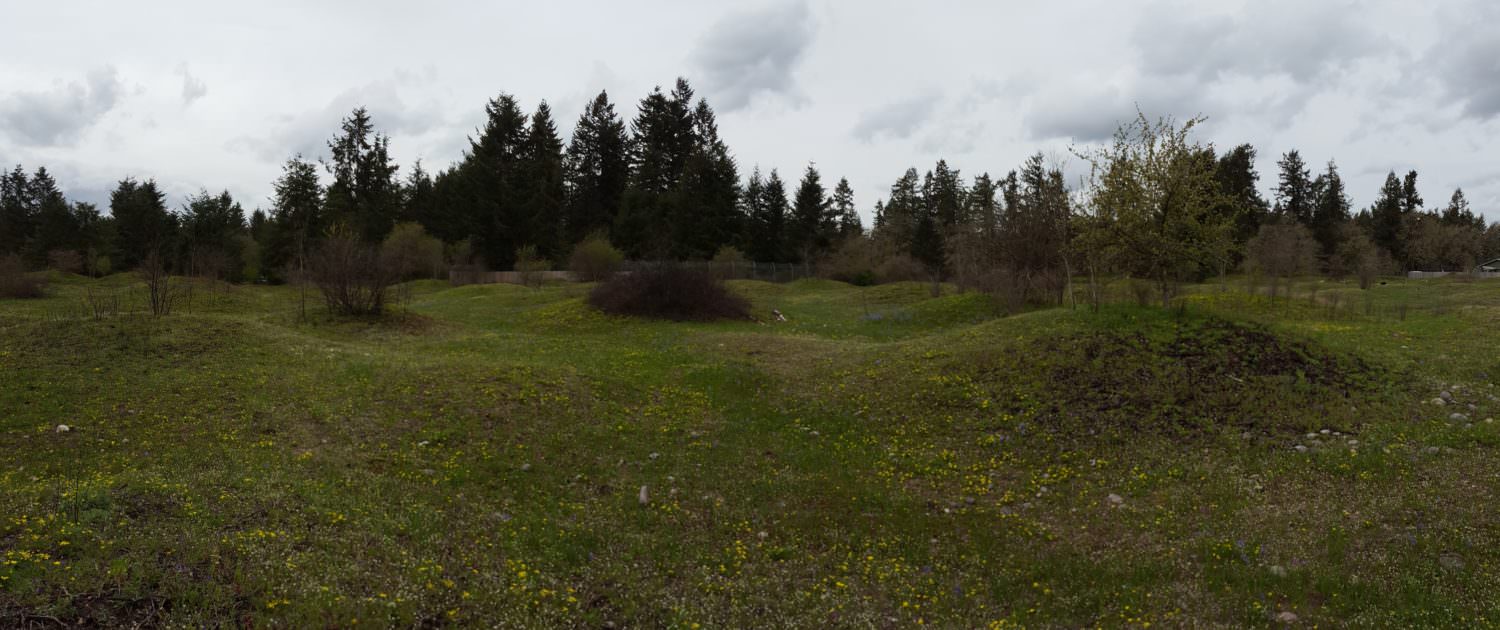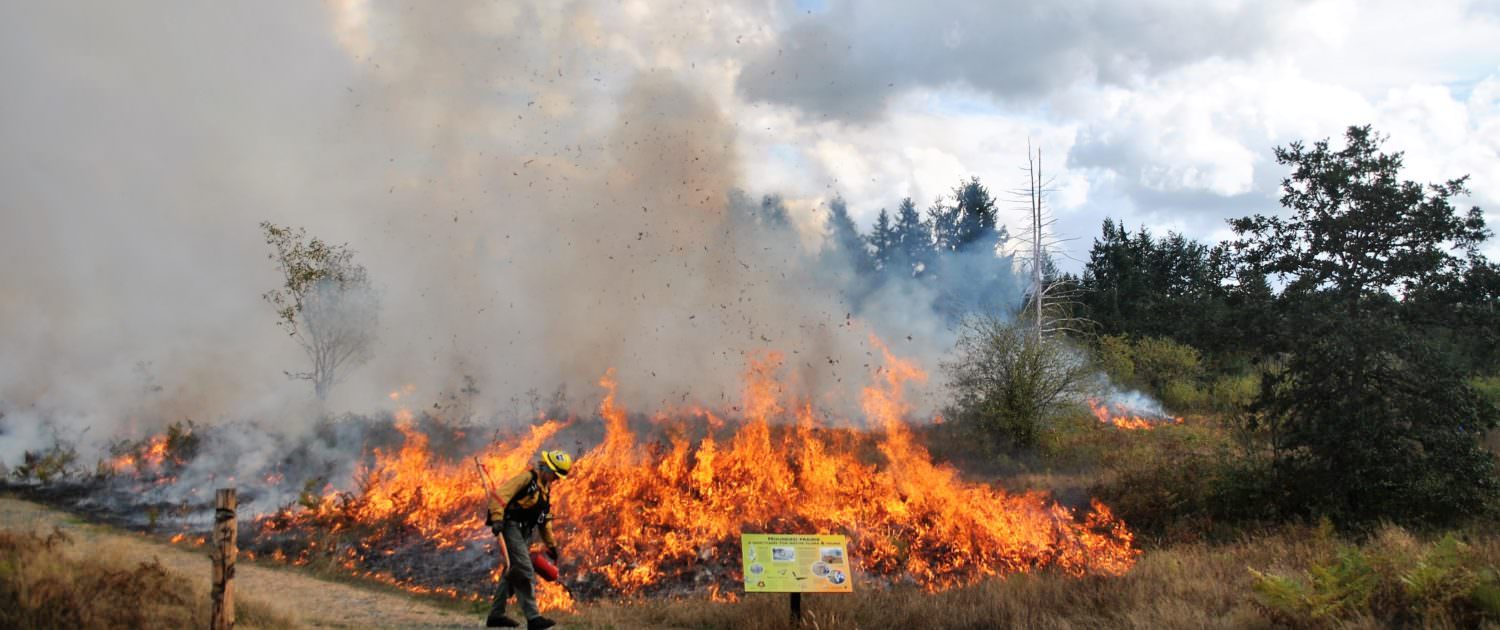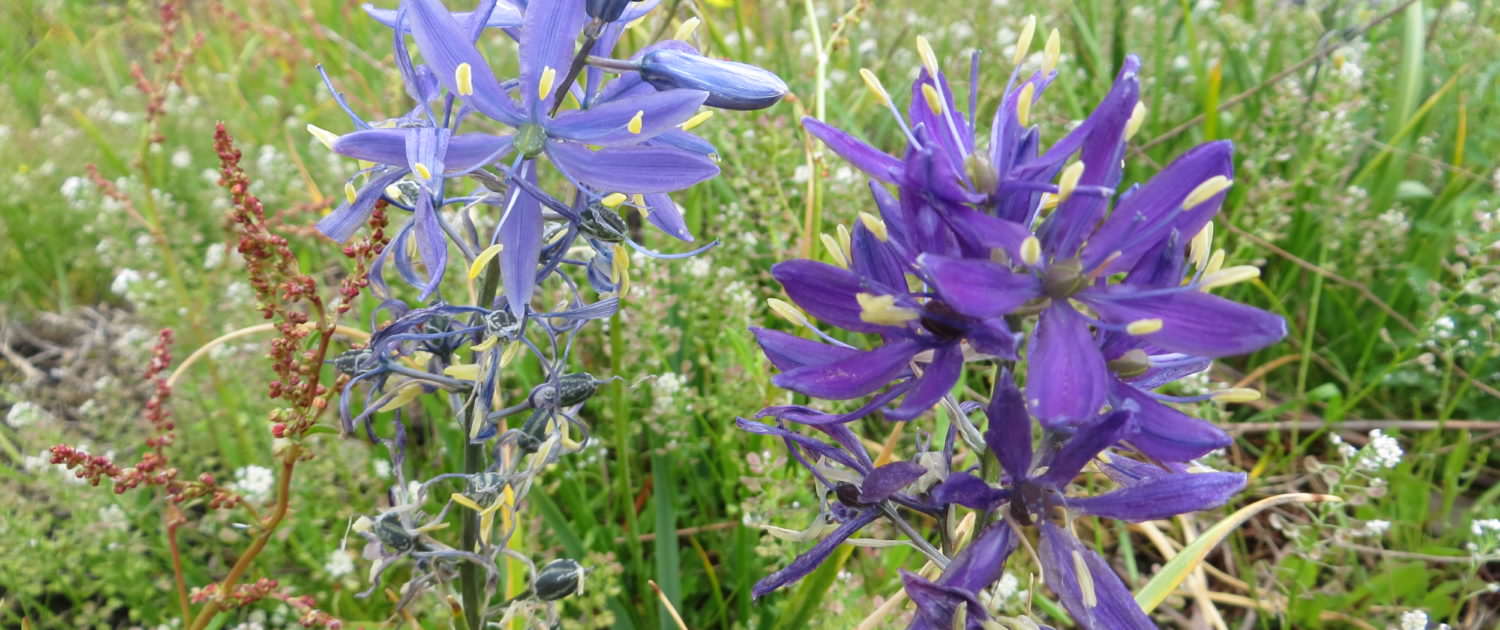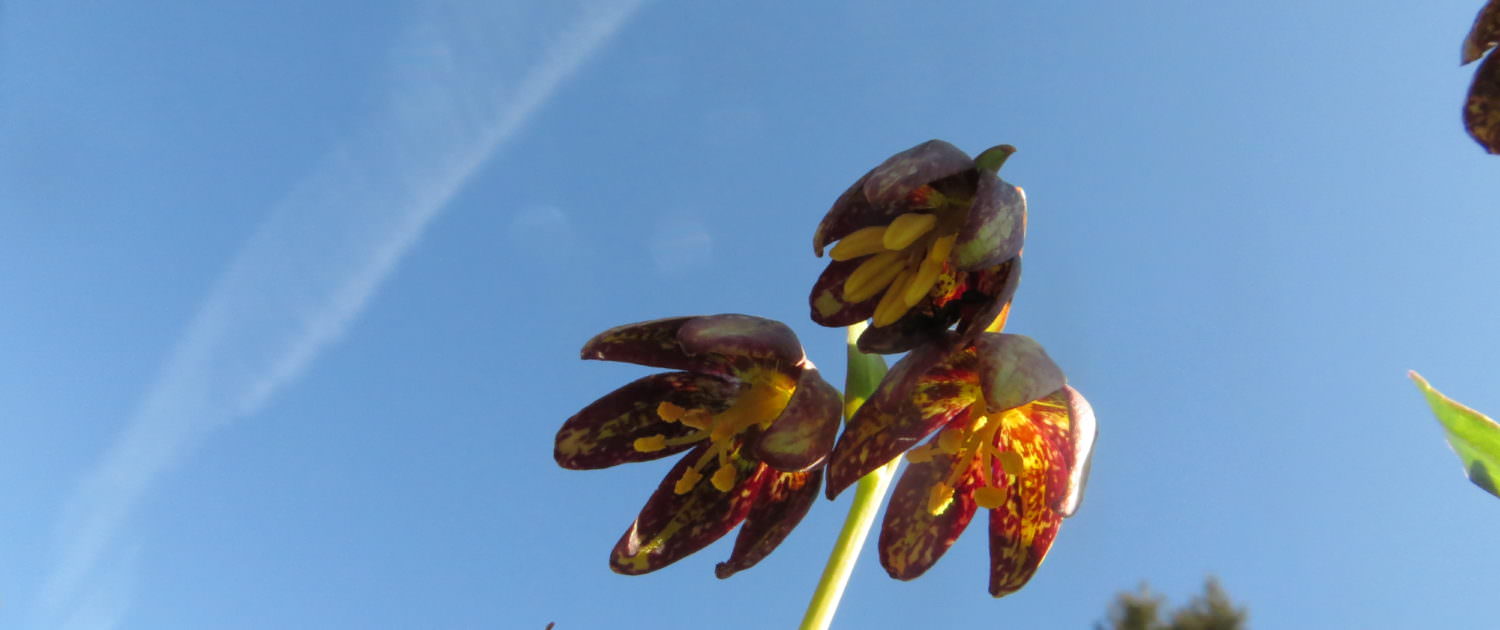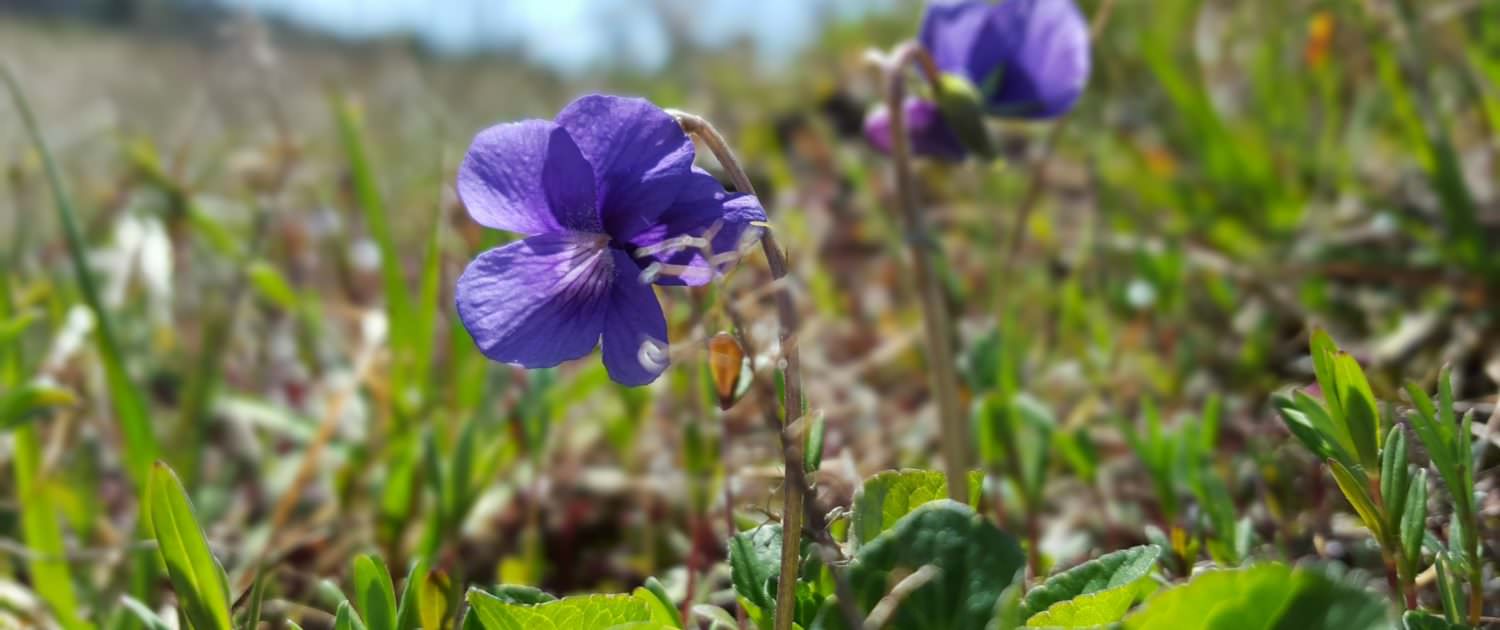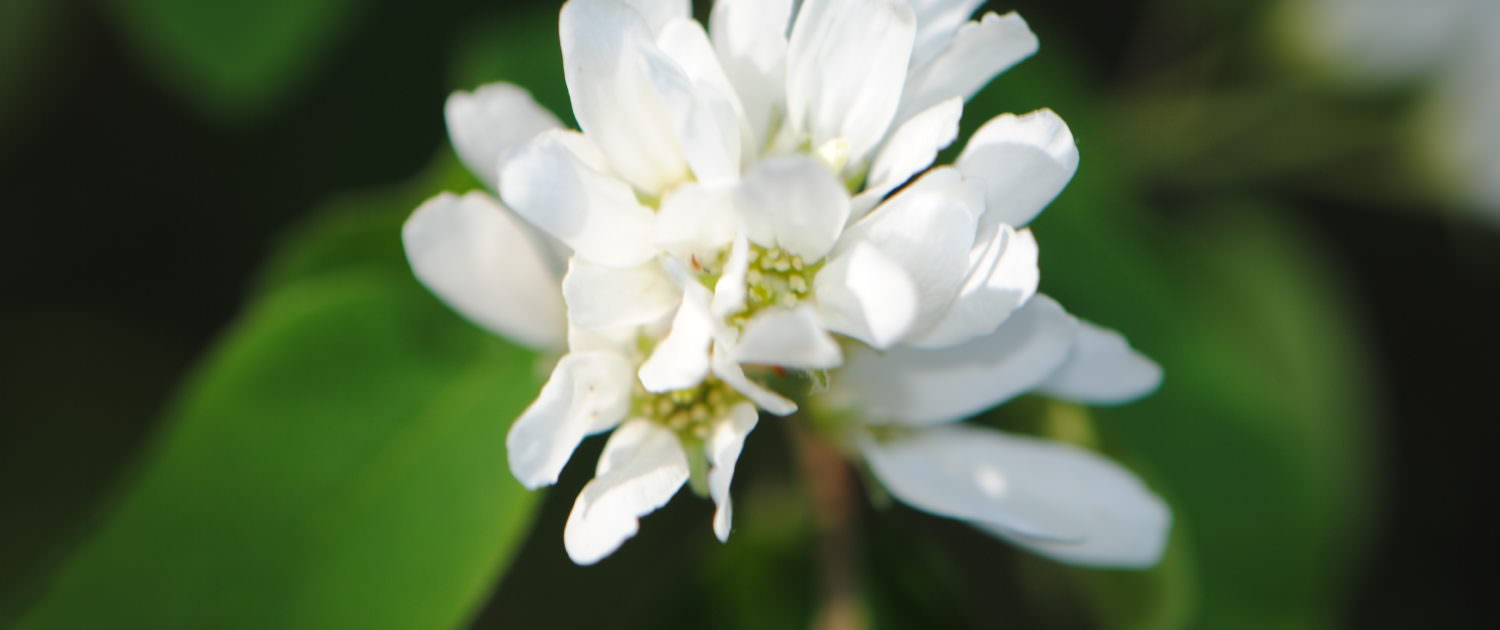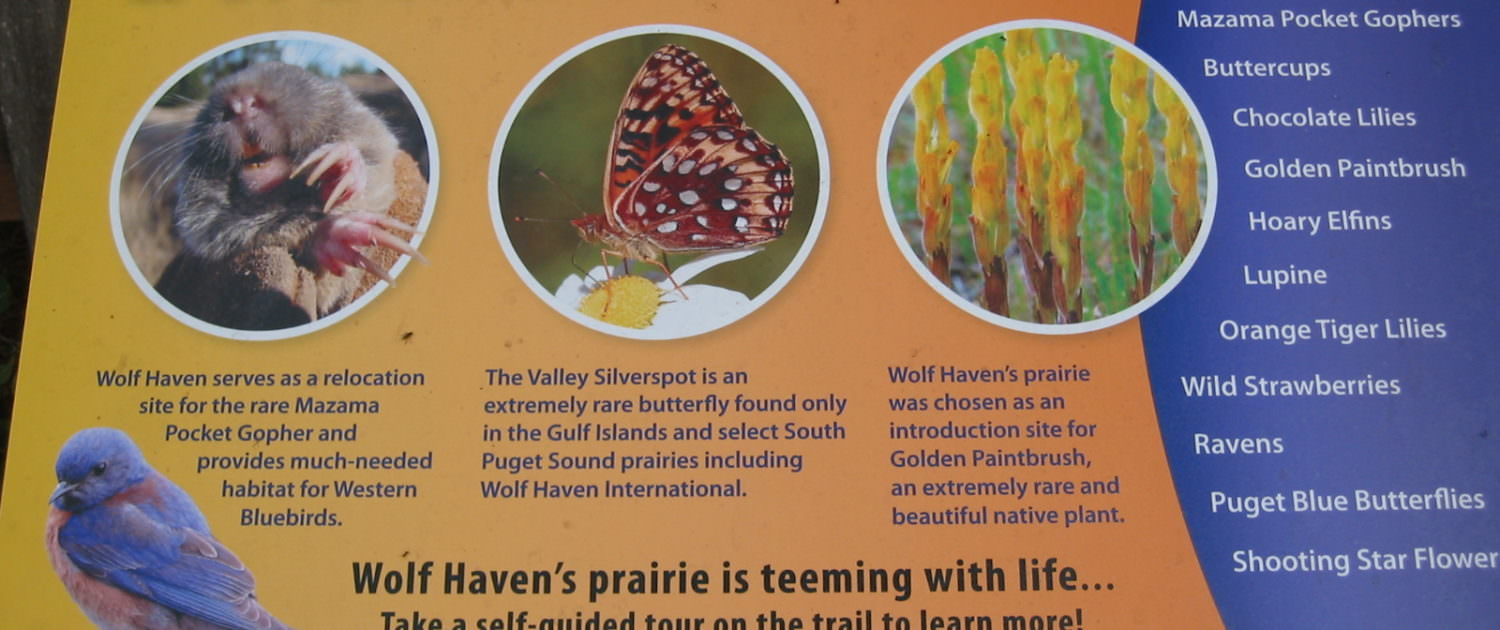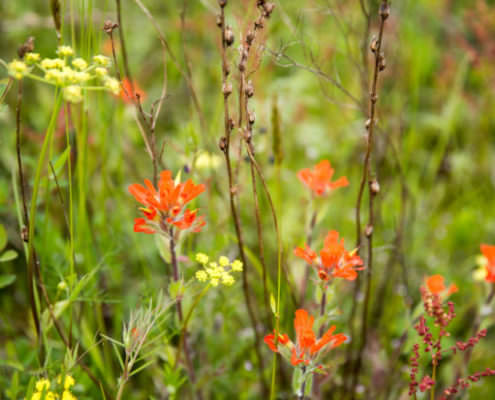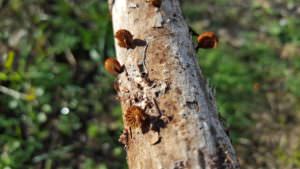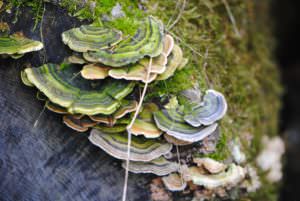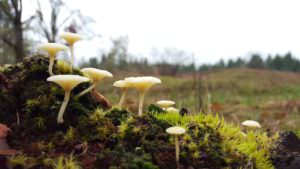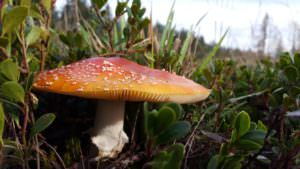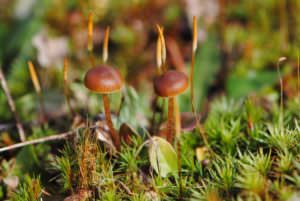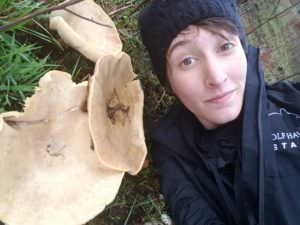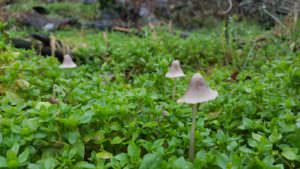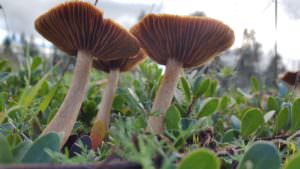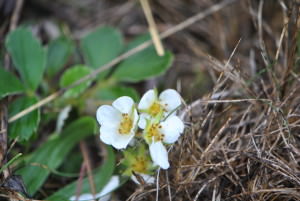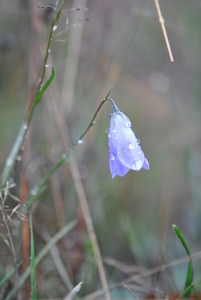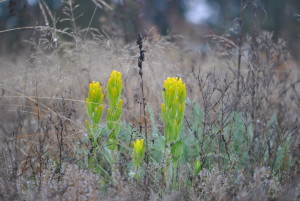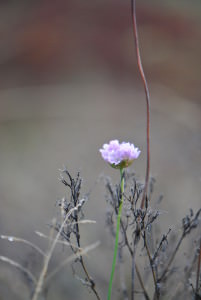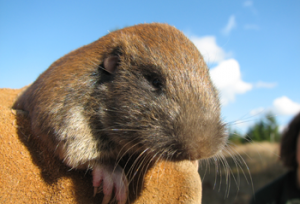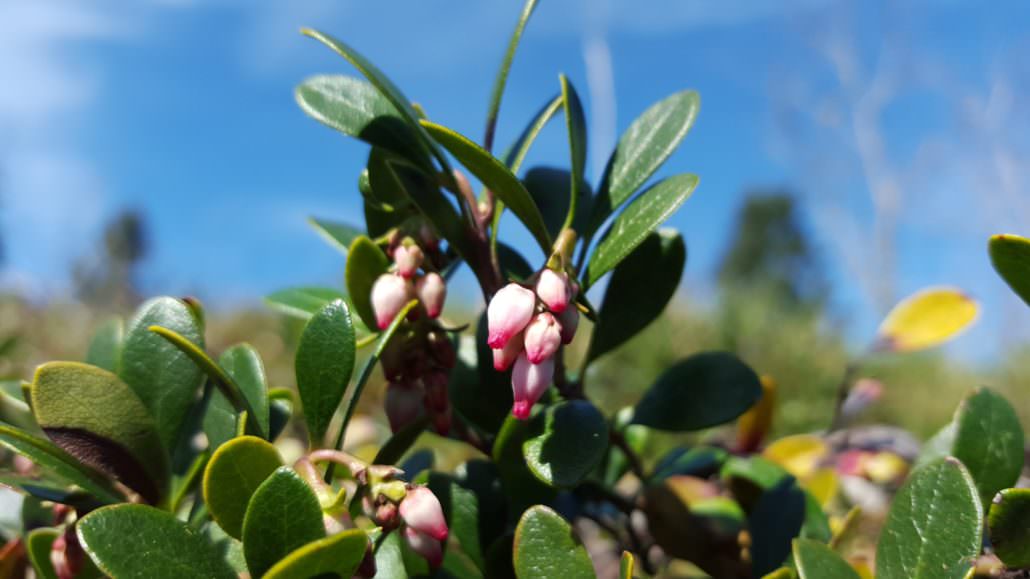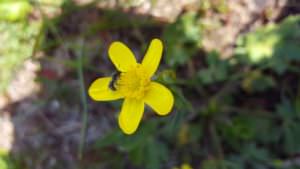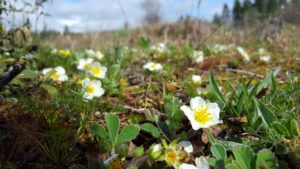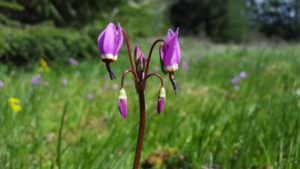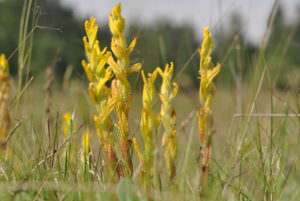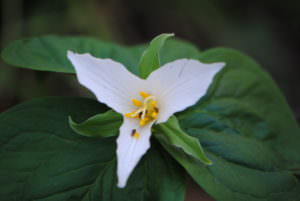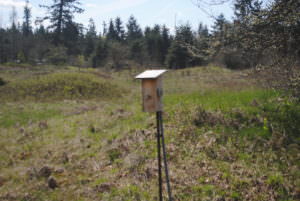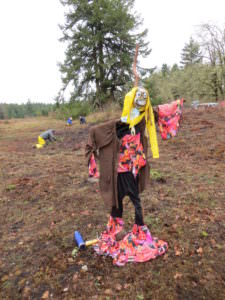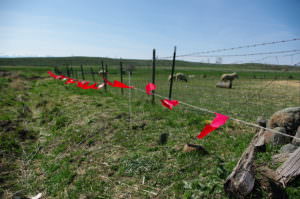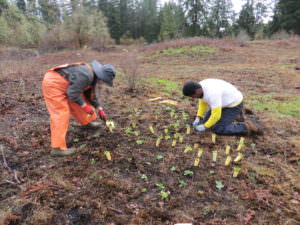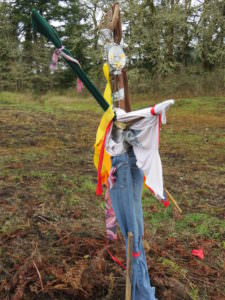Posts
Wolf Haven renames prairie the Patrick Vance Dunn Memorial Prairie
Wolf Haven is pleased to announce that in honor of Pat’s tremendous legacy, our prairie is now known as the Patrick Vance Dunn Memorial Prairie.
Native Plant Appreciation Week April 21-27, 2019
by Marinka Major, Wolf Haven International
Native plants find sanctuary at Wolf Haven where 37 acres of rolling, grassy Mima Mounds harbor dozens of rare prairie plants. Prairies have a diverse population of native plants that provide food to many animals, some that only live in prairie ecosystems such as the Mazama pocket gopher, Thomomys mazama and the Taylor’s checkerspot butterfly, Euphydryas editha taylori.
Native prairie plants are fire adapted and thrive in prairies that experience regular burns. Centuries ago, indigenous people thoughtfully burned prairies to ensure the survival of the many fire dependent plants. At Wolf Haven, The Center for Natural Lands Management (CNLM) manages and preforms prescribed burns on the prairie, keeping it healthy just as people did generations ago.
Many of the native plant species found in our South Sound prairies have great significance to people for their use as food or medicine. One of the showiest plants on the prairie is the common Camas, Camassia quamash a traditional food still being harvested and eaten today. The Camas produces an onion-like bulb that can be eaten after cooked and the periwinkle flowers cover prairies from late April to mid-May in a spectacular show.
The Chocolate Lily, Fritillaria affinis, also produces an edible bulb and has a unique blossom that resembles a dark brown tulip with bright yellow stamens and pistils that can be seen blooming April through May.
Another enchanting flower of the prairie is the early-blue Violet, Viola adunca. The short plant produces purple flowers that several butterfly and nectar eating species depend on.
Not only does the prairie provide edible bulbs and flowers but berries too! The Western serviceberry, Amelanchier alnifolia is a large shrub that blooms with spiky white flowers in the spring giving way to fat, dark purple berries at the end of summer.
Interpretive signage guides you through our rare prairie.As we celebrate Native Plant Appreciation Week, let’s be sure to not only stop and smell the roses, but to look around and enjoy the wonders of our native plants!
South Sound Ecological Burn Program – Centralia Chronicle
Prescribed burning began in Thurston County on July 12 at Glacial Heritage near Rochester. Those operations then expanded to include the Tenalquot Prairie area through Aug. 1 when smoke from around the region shut down the operation for two weeks. Once the smoke cleared, operations resumed on 14 acres at Wolf Haven near Tenino.
Sustainability in Prisons Project – visiting Wolf Haven’s prairie
This is a wonderful blog post written about The Evergreen State College and WA State Department of Corrections Sustainability in Prisons Project. Inmate technicians were able to see first-hand the rare prairie that they are helping to restore. So many groups in the Pacific Northwest are dedicated to preserving and restoring our disappearing native prairies and we at Wolf Haven are grateful to all of them.
CLICK HERE to READ AND SEE PHOTOS of Sustainability in Prison’s Project prairie work.
Text by Jeanne Dodds, SPP Prairie Conservation Nursery Coordinator for Washington Corrections Center for Women and Photos by Ricky Osborne
Fabulous Fungi
It may be spring (or even summer) weather in other parts of the country, but in western Washington, the rains continue unabated. Rather than fight it, Wolf Haven is reprinting an article which originally ran in the winter issue of our members-benefit magazine, Wolf Tracks. Just for fun, we’ve added some more pictures of mushrooms that can be found on our prairie.
By Anne Schuster, Prairie Specialist, Wolf Haven
The rainy season of the Pacific Northwest is also the season of mushrooms. Mushrooms are the reproductive parts of underground fungi, sort of like the flower version of a fungus. Most parts of a fungus are microscopic, living in and among plants and soil. Fungi make up 90% of the living material in forest soil. There are estimated to be up to 5 million species of fungus, but less than 10% of those species are known to science. Fungi, which are more closely related to animals than plants, are amazingly important for humans. The antibiotic penicillin, yeast for baking bread and brewing alcoholic beverages, and delicious truffles are all types of fungi. Fungi were the first living organisms to colonize land; they might stimulate clouds to rain with their spores; and are a huge reason earth is not covered in dead plants and toxic materials. Fungi are one of the few things that can decompose the cellulose from dead trees, but there are also species of fungi that can metabolize dangerous metals, bacteria, and even nuclear waste into safer products.
Next time you are out at Wolf Haven, keep an eye out for some of these mushrooms on our prairie, and also give thanks for their role in our world.
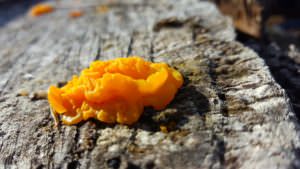
Witch’s Butter
Plants blooming on Wolf Haven’s prairie in… October?!
by Anne Schuster, Prairie Conservation Specialist at Wolf Haven International
Ah, Fall – a time of pumpkins, spiced apple cider, fiery-colored autumn leaves and trick-or-treaters. But look at what’s blooming on our prairie right now. These beautiful plants typically flower in spring or early summer – not October.
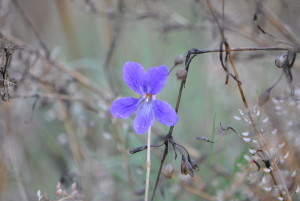
Despite its name, the Early Blue Violet (Viola adunca) blooms after a rain, but October is a bit late for it.
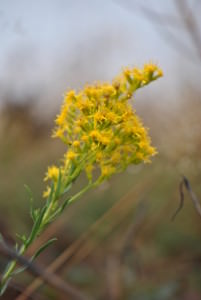
Goldenrod (Solidago sp.) is a great late season nectar source for insects, but October is late for it as well.
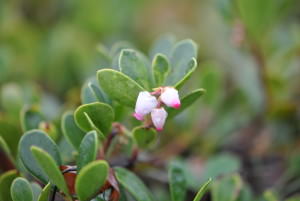
Kinnikinnick (Arctostaphylos uva-ursi) usually blooms in spring, has flowers all around the prairie right now.
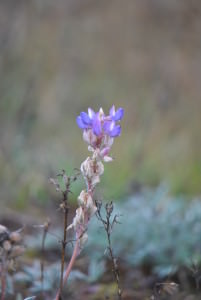
Elegant Lupine (Lupinus lepidus) often blooms all through the summer, but this one is finishing up now.
Young Mazama pocket gophers struggle to find their place in a new world
By Kim Flotlin, USFWS wildlife biologist
Mazama pocket gophers are another fascinating animal found at Wolf Haven (although rarely actually seen, since they primarily reside underground). The Mazama pocket gopher is both state and federally listed as threatened.
USFWS wildlife biologist Kim Flotin has written an entertaining, informative blog about the challenges faced by both dispersing pocket gophers and college students.
Young Mazama pocket gophers struggle to find their place in a new world
What’s blooming on the Wolf Haven prairie in early April
The nice weather of spring has brought beautiful wildflowers to the South Sound prairies. If you come by Wolf Haven International in the next couple weeks you will be in for quite a show on the prairie.
As you walk along the trail, you might first notice the shining yellow Western Buttercups (Ranunculus occidentalis) or the low white flowers of the Virginia Strawberry (Fragaria virginiana). Make sure you take a closer look
between the green Camas shoots coming up, because the striking Henderson’s Shooting Star (Dodecatheon hendersonii) is in full bloom for a while longer. This flower is sort of built inside out, with the pink-purple petals sticking backwards towards the stem, leaving the stamens and pistil to be pointed straight out of the flower.
Some mounds are covered in a dark green plant called kinnikinnick (Arctostaphylos uva-ursi) which is just starting to get its light pink bunches of bell-shaped flowers. Make sure not to step off of the trail, as kinnikinnick is a host plant for the caterpillars of the rare Hoary Elfin butterfly.
When you get closer to the Grandfather Tree, you will be between two areas that have had prescribed fire applied to them in the past few years, one of which was burned in 2013. These areas will have some new and easier to see flowers. The Early Blue Violet (Viola adunca) is sprouting up in deep purple patches near the trail.
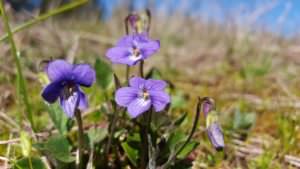
Early Blue Violet
Careful not to leave the trail, you can look on the North side of the trail, before the Grandfather Tree, to try and spot some Golden Paintbrush (Castilleja levisecta) coming up. Golden Paintbrush is federally listed as threatened, and state listed as endangered, so if you see it, do not disturb it. All paintbrush species are hemiparasites, which means that they have some chlorophyll with which to make some food, but they get most of their nutrients by stealing it from nearby plant’s roots. The brilliant colors associated with
paintbrush plants are not their flowers, but rather colorful leaves. Golden Paintbrush has inconspicuous green flowers between the bright yellow leaves.
Other flowers in this area are the very small blue flowers of Blue Eyed Mary (Collinsia parviflora) and the tall stalks with freshly blooming white flowers of Wholeleaf Saxifrage (Micanthes integrifolia). Off in the forest at the edge of the prairie, there is still a Pacific Trillium (Trillium ovatum) or two in bloom. The famous Common Camas (Camassia quamash) buds have been shooting up, and will start blooming within the next few days, but expect them to cover the prairie in large purple flowers in May.
Many of the plants from last month’s blog are still blooming, and all of the same animals are out, to be joined by many more butterflies and other insect pollinators. Most of the Bluebird boxes are still empty, but it seems that a pair of Tree Swallows is going to nest in the bird box that has a Washington Fish and Wildlife live webcam in it. Most days I see a bird or two in it, and there are more sticks appearing in it every day. You can watch the live bird box cam here: http://wdfw.wa.gov/wildwatch/bluebirdcam/video.html
Anne Schuster,
Center for Natural Lands Management AmeriCorps,
Wolf Haven Outreach and Restoration Technician
Scarecrows – a nonlethal deterrent
How is a Scarecrow like Fladry?
Much like fladry is recommended in some instances as a nonlethal management tool to
prevent predators from attacking livestock, scarecrows serve a similar purpose – to prevent corvids from “predating” on prairie plant plugs.
For the past few years, the Center for Natural Lands Management (CNLM) has planted thousands of “plugs” – small seedlings grown in a tray of plants – on Wolf Haven’s prairie. For the past few years, however, almost none of the plant plugs have been able to establish themselves in the rich prairie soil. A few weeks after each planting, CNLM and Wolf Haven staff discover that most of the plugs have been pulled out of the cold ground. It seems that Wolf Haven’s resident ravens and crows go to work every fall, pulling out the plugs and scattering them across the planting sites. The corvids do not eat the plants; rather, they pull them out for fun, or out of curiosity.
Ravens and crows are extremely intelligent and curious creatures, and are notoriously difficult to completely scare away from a site. Wolf Haven is a sanctuary, and the CNLM is far from heartless, so non-lethal corvid deterrents are a must. Loud bird cannons would likely work to keep the birds at bay, but would also disturb Wolf Haven’s wolves. Such a large area of bird netting or a “Whacky Waving Inflatable Arm Flailing Tube Man” are both too expensive and unwieldy to be placed on the prairie.
The purpose of the plant plugs is to create larval food and nectar sources for a future release of the rare Taylor’s Checkerspot Butterfly. Taylor’s Checkerspots are a newly listed endangered species, which have been in fast decline due to the degradation and fragmentation of its native prairie habitats. In order to help create Taylor’s Checkerspot habitat on Wolf Haven prairie, it is critical this year to have a successful planting.
In September, the three planting areas, totaling about 2.5 acres, had been prepped with a controlled burn in July (to force the native plants into dormancy) and an herbicide treatment (to kill off any surviving invasives). On November 5th, CNLM volunteers teamed up with a few Wolf Haven volunteers and a crew from the Department of Corrections to plant over 12,600 plugs and build scarecrows. In addition to seven scarecrows, six Mylar party balloons were attached to branches and logs on the prairie, and many cassette tape reels, Mylar bird tape, and bright fabric flags were tied throughout the planting areas.
In order to keep the plugs safe, CNLM’s AmeriCorps member for Wolf Haven,
Anne Schuster, moves the scarecrows and balloons every other day, pushing disturbed plugs back in the ground, and putting up more flags and reflective bird tape around the planting sites. Rather than being stuffed with leaves, the scarecrows have clothes loosely hung on them, to create more movement in the wind. The bird tape and flags might scare off small birds, but will hopefully act more as a distraction for the ravens, who might prefer to pull at some shiny material than at plants in the ground.
As of one week after the planting, the scarecrows seem to be doing their job. Only three plugs have been disturbed and pushed halfway out of their holes. The three disturbed plugs are in a row, plus there is a tunnel beneath them and fresh mole hills nearby – so the culprit in this case is probably not a corvid, but a mole.
Anne Schuster,
Center for Natural Lands Management AmeriCorps,
Wolf Haven Outreach and Restoration Technician


